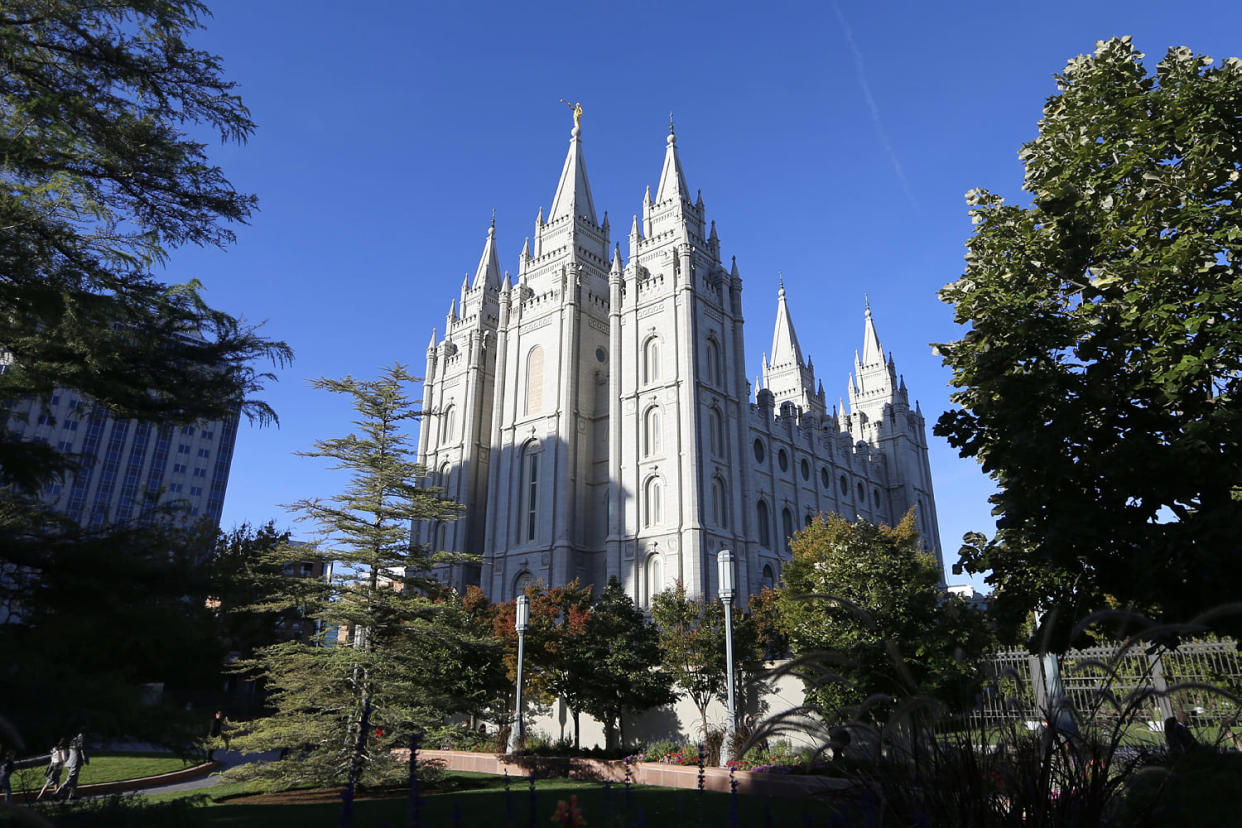Mormon church issues new restrictions on transgender members

The Church of Jesus Christ of Latter-day Saints, known widely as the Mormon church, issued a slew of new policies this week expanding its restrictions on transgender members.
The policies, released Monday, include rules barring trans people from working with children, becoming priests and serving as teachers. The church also expanded on an existing rule that barred trans people from being baptized.
Trans members will also face possible annotation on their membership records, grouping them with churchgoers who have committed incest, sexual predatory behavior, sexual violence against children and embezzlement of church funds.
“Church leaders counsel against pursuing surgical, medical, or social transition away from one’s biological sex at birth,” the church’s General Handbook states. “Leaders advise that taking these actions will result in some Church membership restrictions.”
Those who do “transition away from their biological sex at birth,” the handbook notes, will be completely turned away.
“These individuals and their families are encouraged to counsel with their local leaders regarding Church participation,” it states.
The new rules — which were part of a broader update to the church’s General Handbook — come roughly four years since the Salt Lake City, Utah-based church first released extensive guidelines on transgender people.
The church did not immediately respond to a request for comment about the new and expanded restrictions on trans members.
Taylor Petrey, chair of the religion department at Kalamazoo College in Michigan and author of a forthcoming book about the intersection of sexuality and the faith, “Queering Kinship in the Mormon Cosmos,” said that the new changes make the church “much more restrictive and much less accommodating than there used to be space for.”
Petrey pointed to the 2020 rule that restricted trans people from being baptized. That rule only banned baptism for trans people if they had begun transition-related medical treatment. However, that rule was expanded this week to also bar trans people from being baptized if they have socially transitioned — changed their name or appearance — without undergoing gender affirming health care.
“What you see in this 2024 change is a rolling back of some of those things or some concern that some local church leaders had taken things further than they expected back in 2020 when they put these new policies in,” he said.
The church will allow for exceptions to the limitations only if granted permission from its leadership, according to the handbook. It also states that restrictions on trans people can be reversed if they detransition.
The new policies conflict with the church’s more welcoming position to the LGBTQ community in recent years, which followed backlash in the early 2000s for its support for California’s Proposition 8 ban on gay marriage.
While it still opposes same-sex marriage and consensual gay sex, the Mormon church came out in favor of the Respect for Marriage Act in 2022, which enshrined protections for same-sex and interracial marriages into federal law. At the time, the church said it would support the legislation because it “includes appropriate religious freedom protections while respecting the law and preserving the rights of our LGBTQ brothers and sisters.”
In 2019, the church also issued a policy to allow children of same-sex couples to be baptized, rolling back an earlier decision from 2015 to prevent the baptisms.
In a broader section titled “individuals who identify as transgender,” the church handbook states that it “does not take a position” on people who “feel their inner sense of gender does not align with their biological sex at birth.”
“These individuals often face complex challenges,” the handbook reads. “They—and their family and friends—should be treated with sensitivity, kindness, compassion, and Christlike love. All are children of God and have divine worth.”
Petrey said the contradiction is a result of how the Mormon church and other religious groups “are adjusting to the changed landscape around LGBTQ issues over the last 20 to 25 years.”
“The church has also struggled with how to thread the needle on these issues, holding fast to what they see as unchangeable elements of their teachings while still trying to reach out to and be inclusive of LGBTQ members,” Petrey said. “And we’re finding that those two groups are still not quite able to meet in the middle here.”
For more from NBC Out, sign up for our weekly newsletter.
